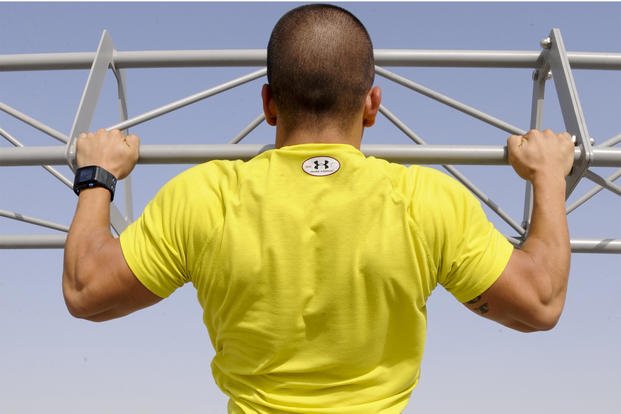Developing the strength and stamina for high-repetition pull-ups – and, ultimately, reaching the maximum score of any military fitness test – is a journey that requires patience and a variety of training methods. While increasing volume is a common strategy to enhance muscle endurance, some may find that a strength-building cycle is necessary to elevate their pull-up performance.
Consider the case of a young man who has already achieved 20 pull-ups and is eager to do more as he prepares for the Marine Corps:
Stew, would you recommend doing deadlifts and bent-over rows to help with pull-ups? I don’t find doing endless pull-ups multiple times a week to be helpful. I am stuck at 20 and trying to get to 30. Thanks, Tacoma
Tacoma, great job getting to the 20-pullup mark. My initial advice is to be happy with 20 and focus on another weakness, as pull-ups are not an issue to worry about if you are preparing for the Marines.
Many people like to double down on strength but, in doing so, may ignore weaknesses such as running or rucking. Make sure this is not what you are doing, as an undeveloped weakness will be exposed in fitness tests prior to boot camp and throughout difficult Marine Corps training.
Read More: The Best Pull-Up Workouts to Get Unstuck on Your Progression
I agree that doing endless pull-ups multiple times a week gets old and can lead to lingering shoulder and elbow tendonitis-type injuries. You have a few options:
Weight west: Adding a 20-lb weight vest to your pull-up workouts can reduce total volume and work more of the pull-up strength. Try a pyramid with a weight vest or sub-max super set to get about half the total volume but with a strength/endurance combination focus. Try five to 10 sets of 10 reps with a weight vest.
Weight vest + calisthenics burnout: Try this tough workout once a week. After a few days' rest from doing pullups, try a max-rep set of 20-lb weight vest pull-ups, take off the vest, and max out immediately to finish the set. You will find a similar burnout feeling at the end of this set without all the repetitions when doing without a weight vest. If you want to balance it out, add in running and plank pose. This way, you can also focus on other events you need to excel in.
Weightlifting cycle: For adding mass and strength, a weightlifting cycle may also be helpful for the goal of improving pull-ups. This will be different from your typical lift cycle as you prepare for any tactical professions that will also involve running, rucking, load bearing, high-rep calisthenics testing and more. Try this Pull and Leg Day as an example:
Warm up with calisthenics like pull-ups and squats to get the legs, back, and arms ready to lift.
Repeat 5 times
Jog 1 minute
Pullups 5
Squats 10
Lift section: Deadlifts and pull-ups with rows/bicep curls to complete pulling movements.
Repeat 5 times
Deadlift five (go moderately heavy)
Weight vest pull-ups max
Take off weight vest; 10-20 hanging knee-ups
Repeat 3 times
Dumbbell five per arm or five barbell rows
10-15 bicep curls
Cooldown with cardio: Follow the lift section with a run and/or ruck combination for the next 30 minutes to maintain your cardio base while working to build a foundation of strength with muscle stamina on top.
By including these exercises, you will become a more well-rounded tactical athlete. Remember, you do not need to focus solely on being the best at pull-ups. It’s also important to develop full-body strength, power, speed, agility, muscle stamina and endurance.
Getting good at all of these requires some diversity in your training to ensure consistent addition of the needed exercises to your training plan.
The goal is to have no weakness underdeveloped, even though you can be the best in a single event.
Want to Learn More About Military Life?
Whether you're thinking of joining the military, looking for fitness and basic training tips, or keeping up with military life and benefits, Military.com has you covered. Subscribe to Military.com to have military news, updates and resources delivered directly to your inbox.


















